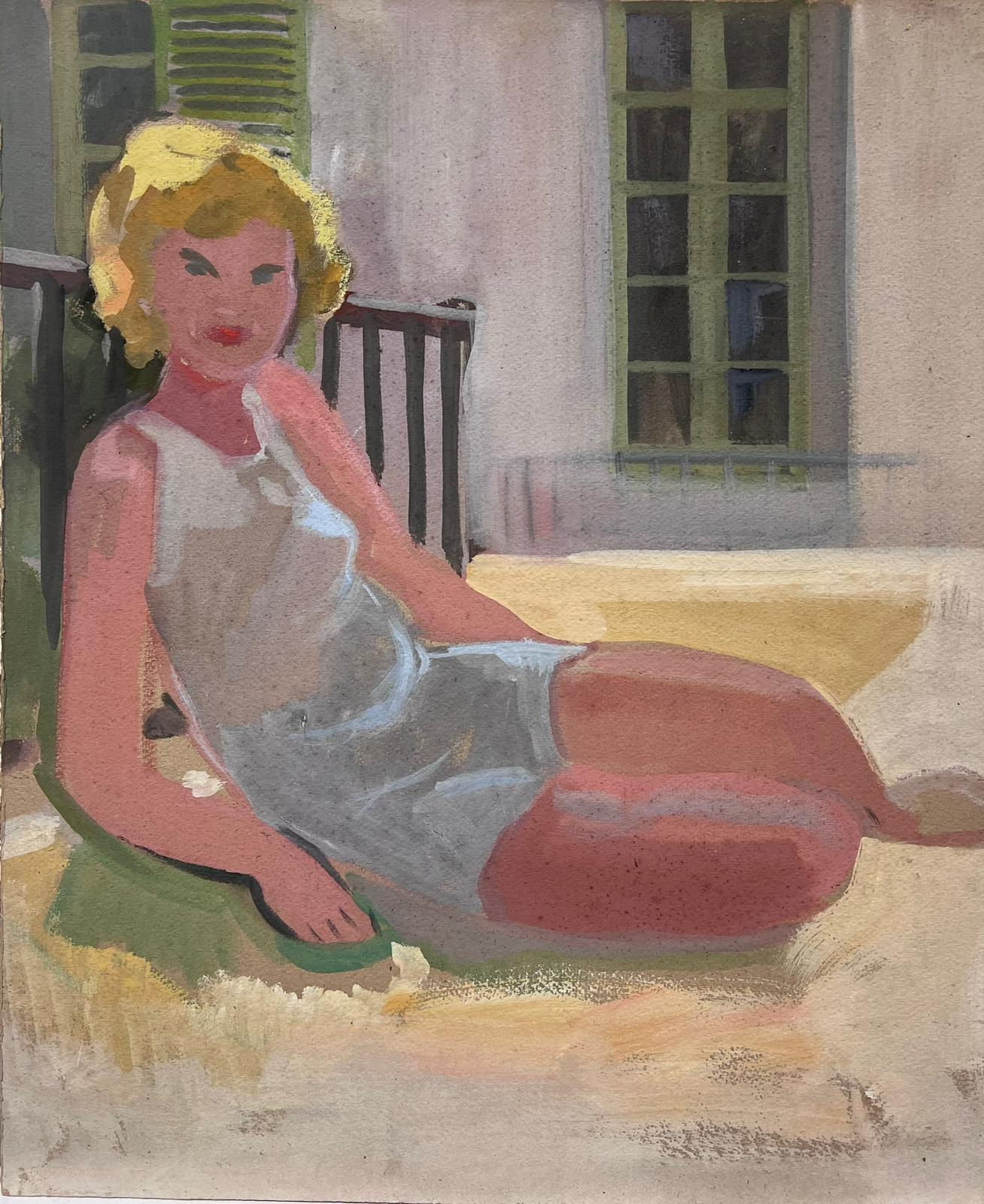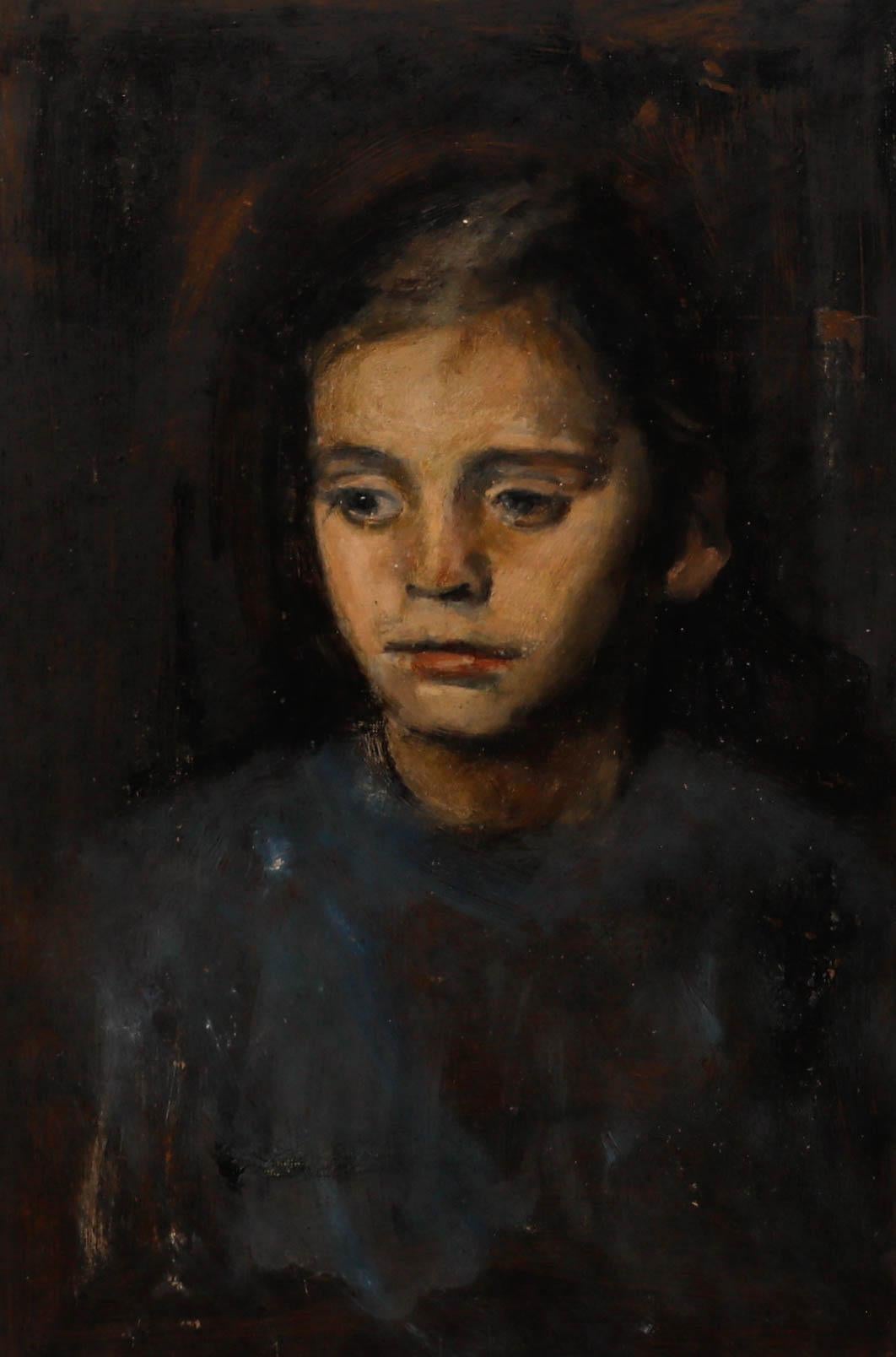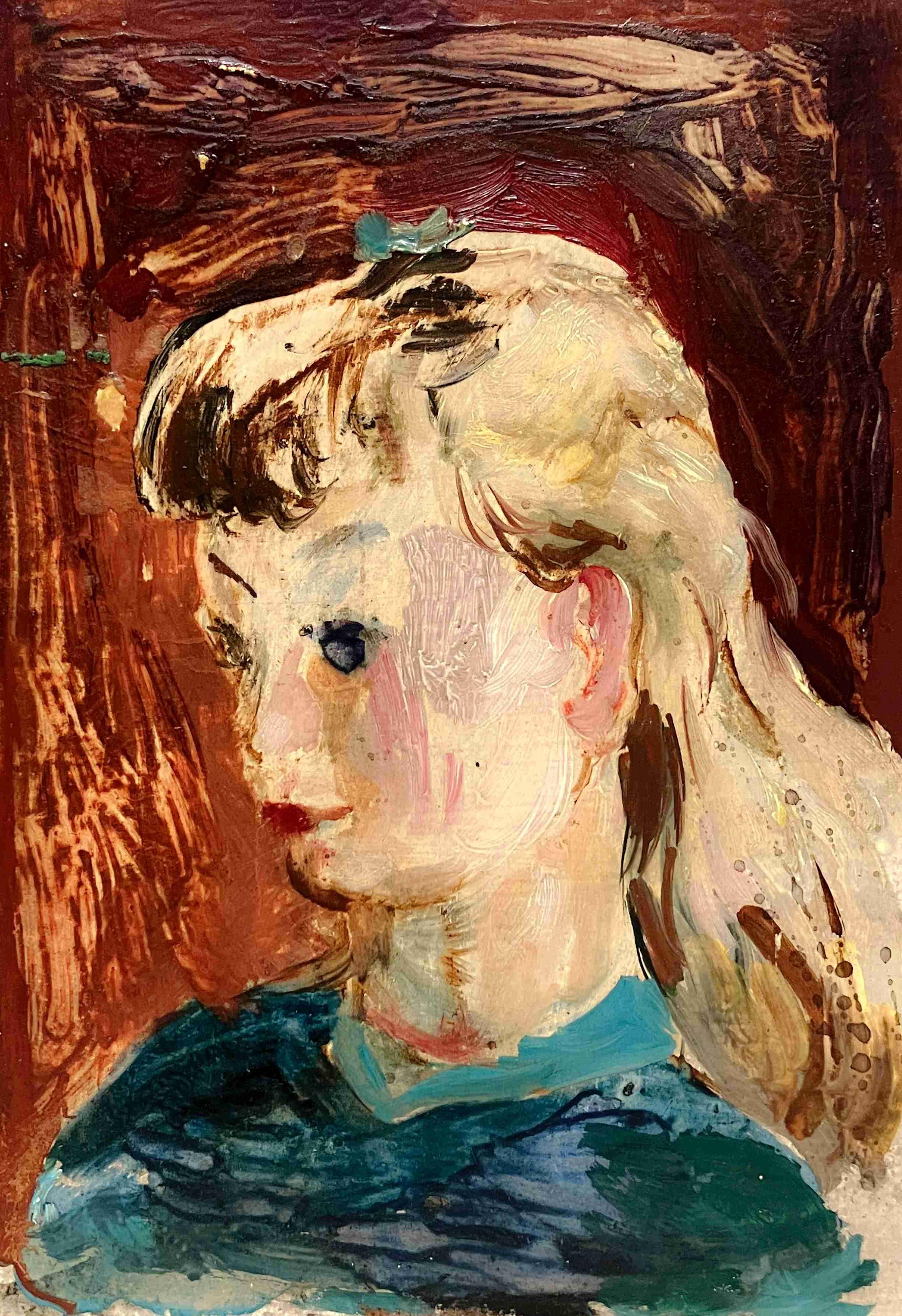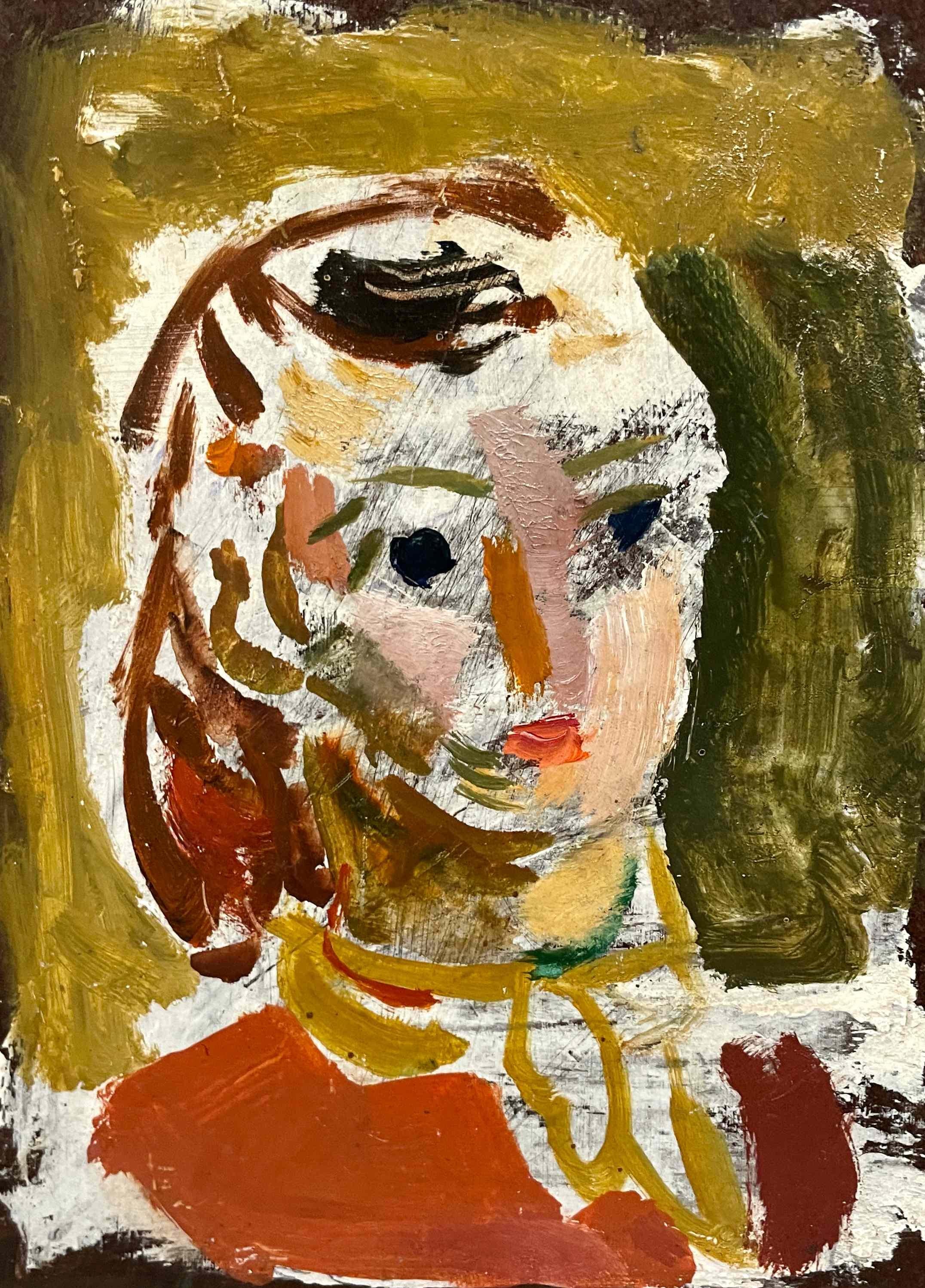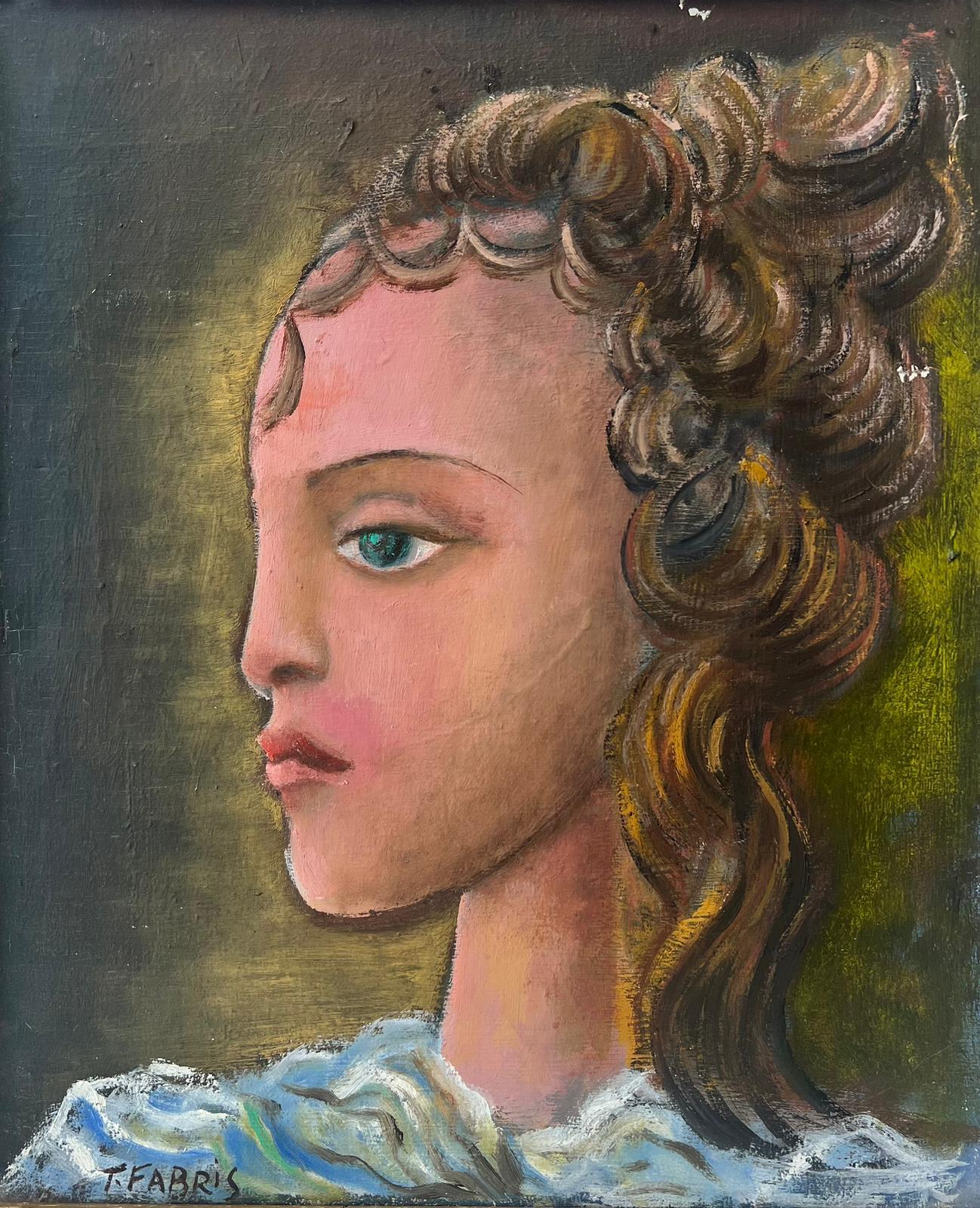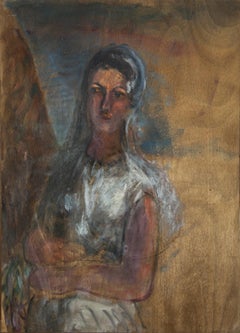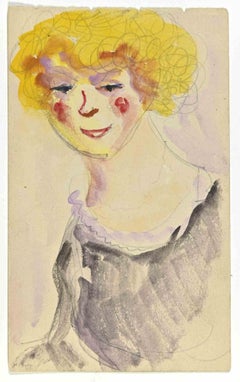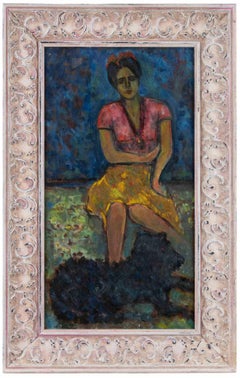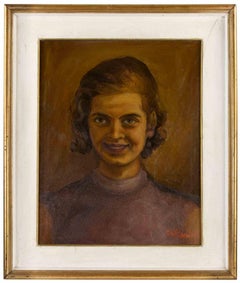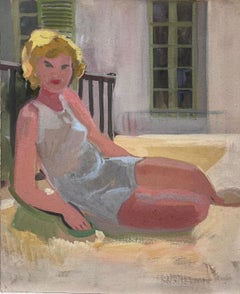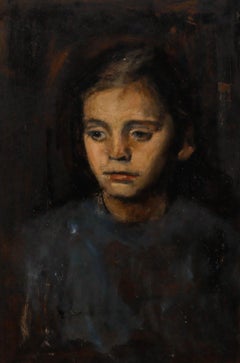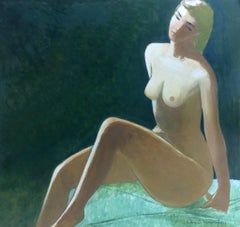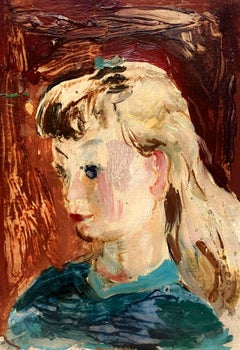Items Similar to Young Blonde Girl - Original Oil on Cardboard by Lucie Navier - 1930s
Want more images or videos?
Request additional images or videos from the seller
1 of 2
Lucie NavierYoung Blonde Girl - Original Oil on Cardboard by Lucie Navier - 1930s1930s
1930s
$273.92
£203.97
€230
CA$375.21
A$418.40
CHF 218.31
MX$5,133.97
NOK 2,778.68
SEK 2,632.74
DKK 1,750.91
Shipping
Retrieving quote...The 1stDibs Promise:
Authenticity Guarantee,
Money-Back Guarantee,
24-Hour Cancellation
About the Item
Young Blonde Girl is an original painting realized by Lucie Navier in the 1930s.
Original oil painting on cardboard.
Hand-signed by the artist on the lower right corner in red painting "Lucie Navier".
Very good conditions.
Original painting representing the portrait of a female blonde girl watching the observe with red lips and a total green background.
Lucie Navier (1910-1996). In the 1940s Lucie Navier lived in the region just west of Paris, in the town of Orgerus, Ile-de-France.
- Creator:Lucie Navier (1910 - 1996)
- Creation Year:1930s
- Dimensions:Height: 12.6 in (32 cm)Width: 9.85 in (25 cm)Depth: 0.04 in (1 mm)
- Medium:
- Period:
- Framing:Framing Options Available
- Condition:Insurance may be requested by customers as additional service, contact us for more information.
- Gallery Location:Roma, IT
- Reference Number:Seller: M-1018661stDibs: LU65034552661
About the Seller
4.9
Platinum Seller
Premium sellers with a 4.7+ rating and 24-hour response times
1stDibs seller since 2017
7,600 sales on 1stDibs
Typical response time: 2 hours
- ShippingRetrieving quote...Shipping from: Grasse, France
- Return Policy
Authenticity Guarantee
In the unlikely event there’s an issue with an item’s authenticity, contact us within 1 year for a full refund. DetailsMoney-Back Guarantee
If your item is not as described, is damaged in transit, or does not arrive, contact us within 7 days for a full refund. Details24-Hour Cancellation
You have a 24-hour grace period in which to reconsider your purchase, with no questions asked.Vetted Professional Sellers
Our world-class sellers must adhere to strict standards for service and quality, maintaining the integrity of our listings.Price-Match Guarantee
If you find that a seller listed the same item for a lower price elsewhere, we’ll match it.Trusted Global Delivery
Our best-in-class carrier network provides specialized shipping options worldwide, including custom delivery.More From This Seller
View AllPortrait of a Girl - Original Oil Paint by Antonio Feltrinelli - 1930s
By Antonio Feltrinelli
Located in Roma, IT
Portrait of a girl is an original artwork realized by the Italian artist Antonio Feltrinelli in the 1930s.
Original oil on plywood.
Beautiful and representative work of a female fi...
Category
1930s Modern Figurative Paintings
Materials
Plywood, Oil
Blond Lady - Drawing by Henri Espinouze - 1950s
Located in Roma, IT
Blond Lady is a drawing in watercolor on paper realized in the 1950s by Henri Espinouze (1915-1982).
The state of preservation is good.
The artwork represented delicately a blond c...
Category
1950s Modern Figurative Drawings and Watercolors
Materials
Watercolor
Young Girl - Paint by Sirio Pellegrini - 1960s
Located in Roma, IT
Oil on wooden panel realized by Sirio Pellegrini in 1968.
Includes a wooden frame realized by the Artist. cm. 73x46.5.
Sirio Pellegrini, born in Rome on March 1, 1922, of Abruzzo o...
Category
1960s Contemporary Figurative Paintings
Materials
Oil, Cardboard
Portrait of Young Girl - Oil on Canvas by Pietro Alimonti - 1969
Located in Roma, IT
Portrait of Young Girl is an artwork realized by Pietro Alimonti, 1969.
Oil on Canvas.
49 x 39 cm ; 88 x 68 cm.
Handsigned in the lower left margin.
Good conditions!
Category
1960s Modern Figurative Paintings
Materials
Canvas, Oil
Spanish Girl - Oil Pastel on Paper by Sirio Pellegrini - 1960s
Located in Roma, IT
Oil pastel on paper realized by Sirio Pellegrini in 1960s.
Very good condition.
Includes a coeval wooden frame cm. 52x61.5.
Sirio Pellegrini, born in Rome on March 1, 1922, of Abr...
Category
1960s Contemporary Figurative Drawings and Watercolors
Materials
Paper, Oil Pastel
Girl - Paint by Sirio Pellegrini - 1976
Located in Roma, IT
Oil on board realized by Sirio Pellegrini in 1976.
Hand signed and dated lower left
Includes a wooden frame realized by the Artist 92x72 cm.
Very good condition.
Sirio Pellegrini...
Category
1970s Contemporary Figurative Paintings
Materials
Oil, Board
You May Also Like
1940's French Impressionist Oil Portrait of Young Blonde Haired Lady
Located in Cirencester, Gloucestershire
Portrait of a Blonde Lady
by Louise Alix (French, 1888-1980) *see notes below
provenance stamp to the back
oil painting on board, unframed
measures: 18 high by 15 inches wide
condit...
Category
Mid-20th Century Impressionist Portrait Paintings
Materials
Oil
George Weissbort (1928-2013) - Mid 20th Century Oil, Portrait of a Young Girl
By George Weissbort
Located in Corsham, GB
Unsigned. Provenance: Studio Sale, George Weissbort, 2 June 2024. On board.
Category
20th Century Portrait Paintings
Materials
Oil
Blonde. 1996. Oil on cardboard, 83x90 cm
Located in Riga, LV
Blonde. 1996. Oil on cardboard, 83x90 cm
This depiction of blonde young nude woman on dark green background and turquoise color surface shows artist Laimdots Murnieks...
Category
Late 20th Century Modern Figurative Paintings
Materials
Oil, Cardboard
$8,384 Sale Price
20% Off
A Cheerful 1950s Modern Portrait of a Young Woman by Francis Chapin
By Francis Chapin
Located in Chicago, IL
A Cheerful, 1950s Modern Portrait of a Young Woman with Blonde Hair by Noted Chicago Artist, Francis Chapin (Am. 1899-1965). Artwork size: 7 1/2” x 5 1/4”, oil on masonite (Framed ...
Category
Mid-20th Century American Modern Figurative Paintings
Materials
Masonite, Oil
A Charming, 1950s Expressionist Portrait of a Young Girl by Francis Chapin
By Francis Chapin
Located in Chicago, IL
A Charming, 1950s Expressionist Portrait of a Young Girl by Noted Chicago Modern Artist, Francis Chapin (Am. 1899-1965). A Wonderful and intimate Mid-Century studio portrait of a yo...
Category
Mid-20th Century American Modern Figurative Paintings
Materials
Masonite, Oil
20th Century French Modernist Signed Oil Painting Portrait of Young Girl Green
Located in Cirencester, Gloucestershire
Tristan Fabris 1970's French surrealist artist
signed oil on canvas, framed
framed: 19 x 16 inches
canvas: 18 x 15 inches
private collection, France
The painting is in overall sound ...
Category
1970s Surrealist Portrait Paintings
Materials
Canvas, Oil
More Ways To Browse
1930s Female Portrait
Blonde Girl
Lip Watches Vintage
Lip Watches France
Oil Portrait Of Young Blonde Girl
Koch John
Linda Wilder
Mandala Thangka
Mark Kostabi Oil Paintings
Nativity Oil Painting
Olaosun Oluwapelumi
Paintings Ballerina Pink
Peter Max Mixed Media Umbrella Man
Prometheus Painting
Redhead Portrait
Robert Fawcett
Violin Player
Crespi Painting
